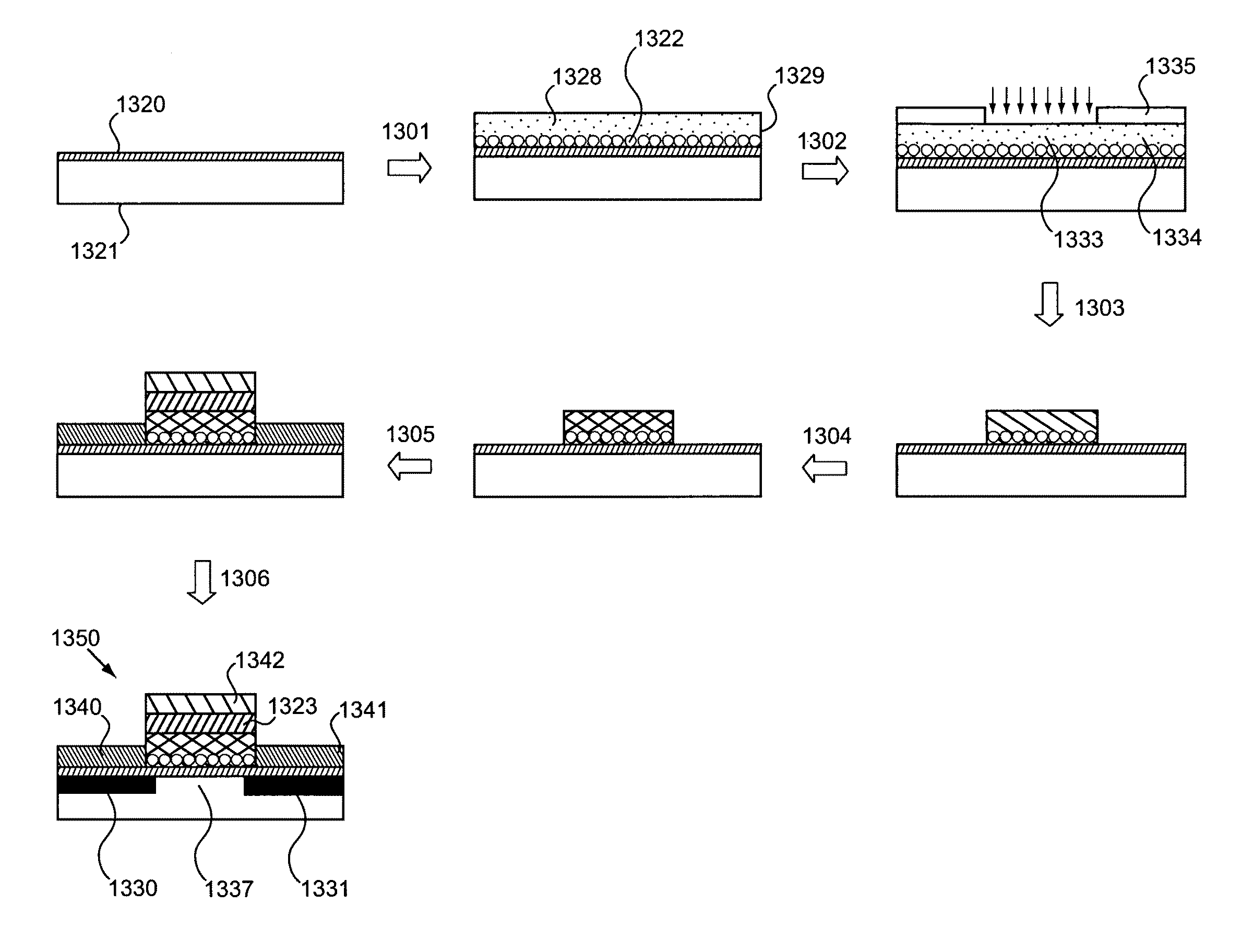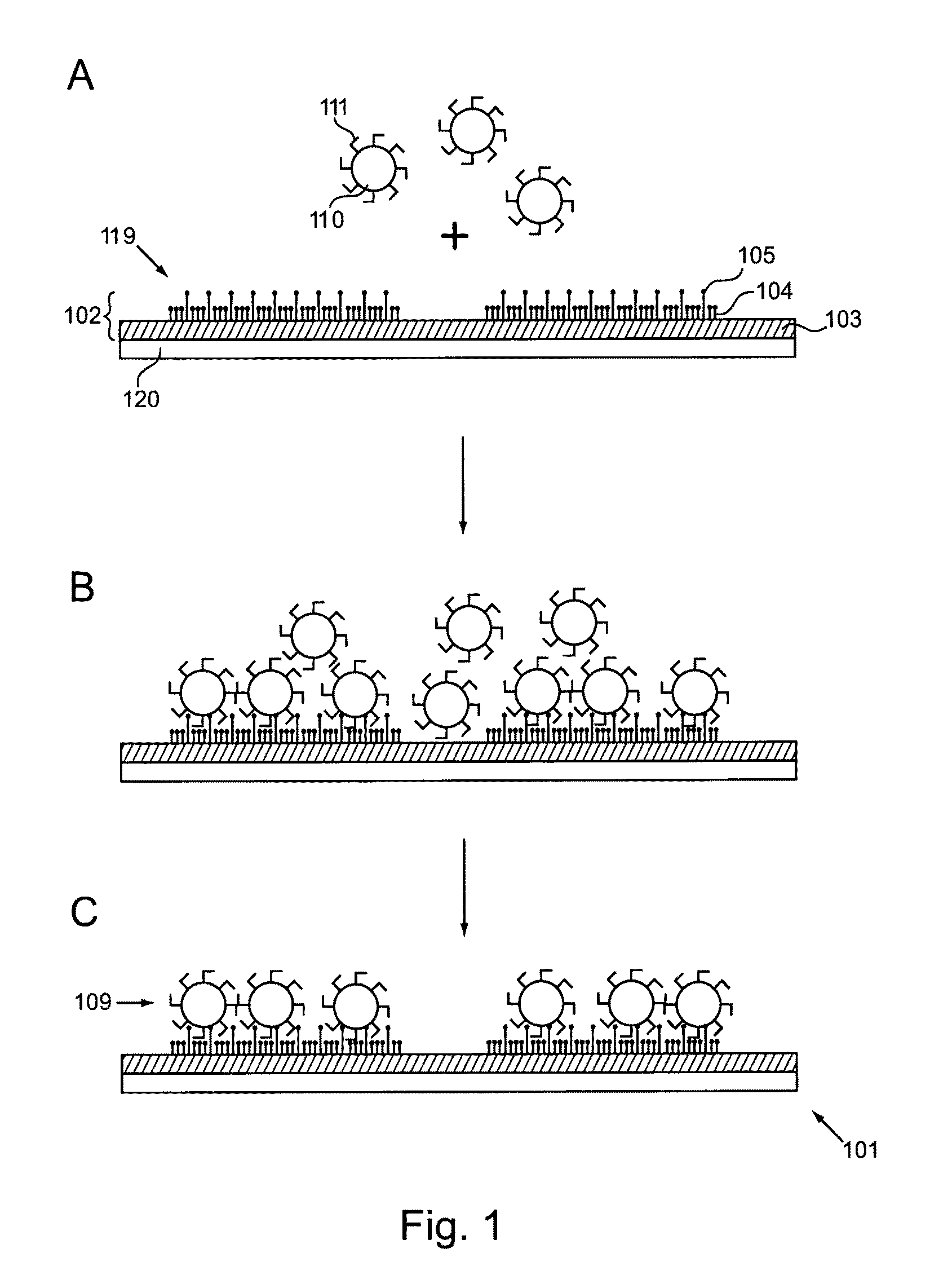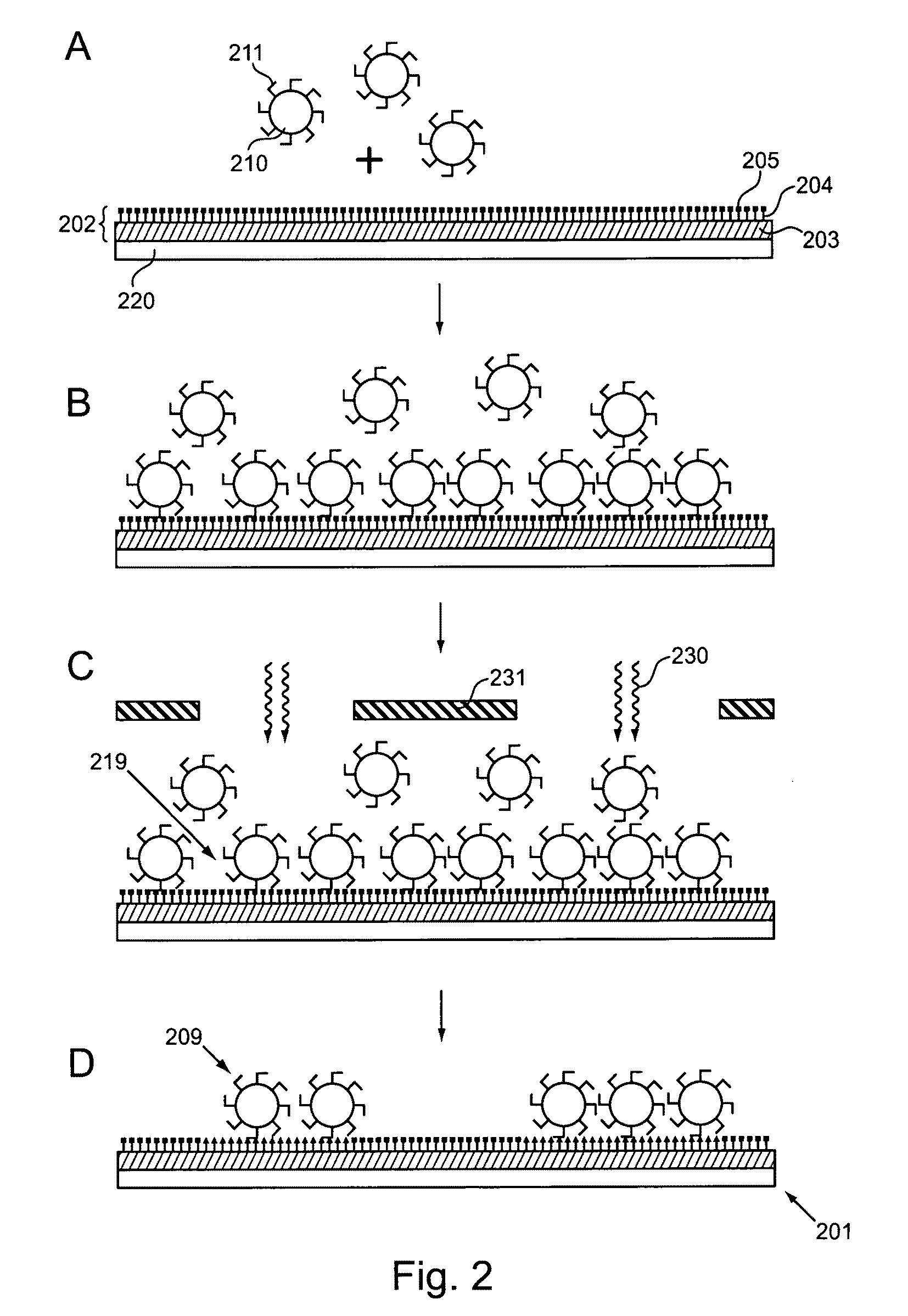Methods and devices for forming nanostructure monolayers and devices including such monolayers
a nanostructure monolayer and nanostructure technology, applied in the field of nanotechnology, can solve problems such as difficulty in scaling up to form large numbers, and achieve the effect of increasing the density of nanostructur
- Summary
- Abstract
- Description
- Claims
- Application Information
AI Technical Summary
Benefits of technology
Problems solved by technology
Method used
Image
Examples
Embodiment Construction
[0062]In one aspect, the invention provides methods for forming nanostructure arrays, e.g., ordered or disordered monolayer arrays of nanostructures. The arrays are optionally formed at predetermined positions and / or have predetermined dimensions. Devices related to the methods are also provided, as are devices including nanostructure arrays. For example, in one aspect, the invention provides memory devices including small monolayer arrays of nanostructures.
Monolayer Formation on Chemical Coatings
[0063]A surface on which a nanostructure array is to be formed can be coated with a chemical composition, e.g., a composition having a higher affinity for the nanostructures than the surface itself does. Such a coating can, e.g., facilitate adhesion of the nanostructures to the surface and can thus facilitate formation of the monolayer.
[0064]Thus, one general class of embodiments provides methods for forming a nanostructure array. In the methods, a first layer is provided and coated with a ...
PUM
| Property | Measurement | Unit |
|---|---|---|
| temperature | aaaaa | aaaaa |
| thickness | aaaaa | aaaaa |
| thickness | aaaaa | aaaaa |
Abstract
Description
Claims
Application Information
 Login to View More
Login to View More - R&D
- Intellectual Property
- Life Sciences
- Materials
- Tech Scout
- Unparalleled Data Quality
- Higher Quality Content
- 60% Fewer Hallucinations
Browse by: Latest US Patents, China's latest patents, Technical Efficacy Thesaurus, Application Domain, Technology Topic, Popular Technical Reports.
© 2025 PatSnap. All rights reserved.Legal|Privacy policy|Modern Slavery Act Transparency Statement|Sitemap|About US| Contact US: help@patsnap.com



